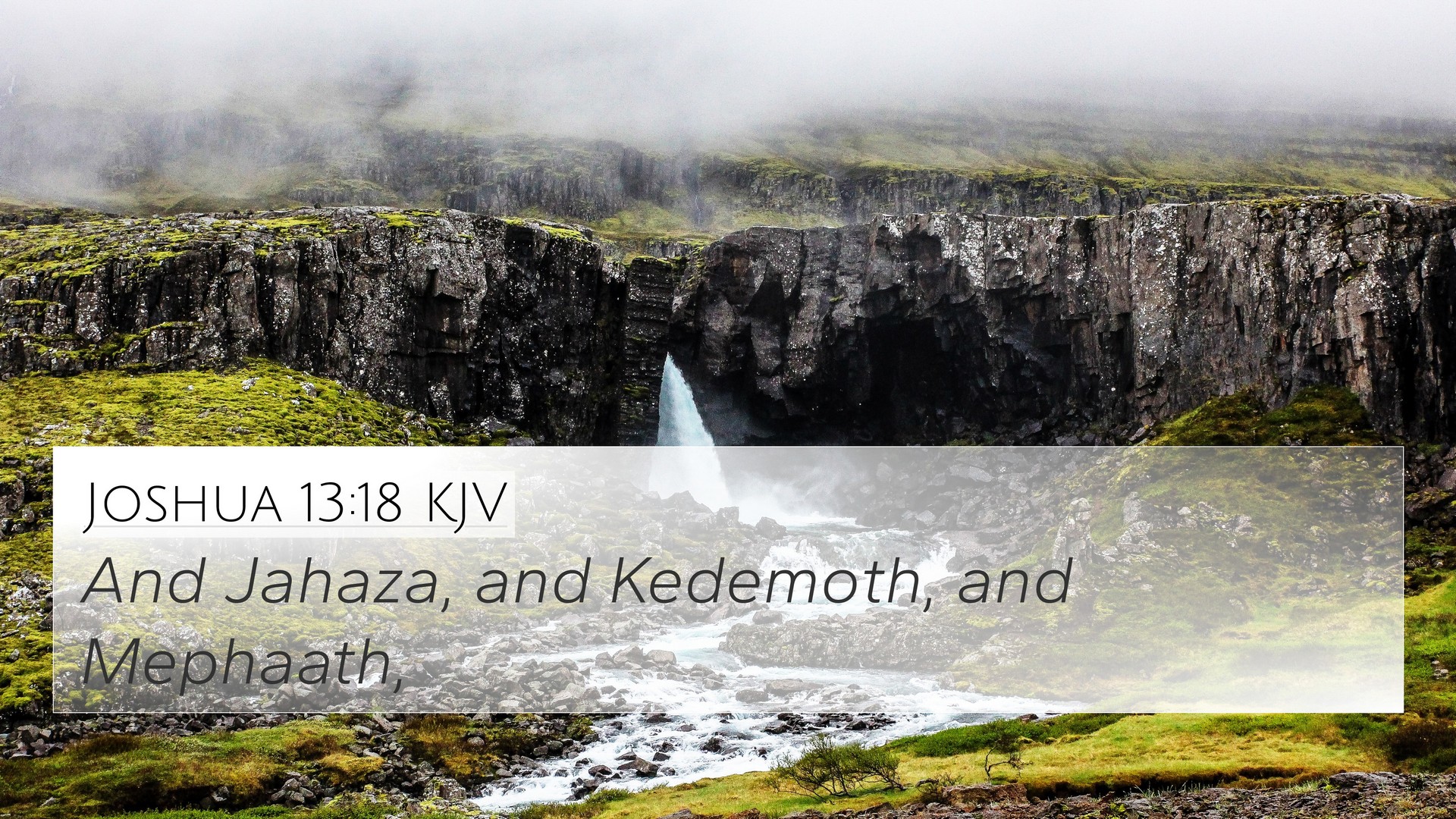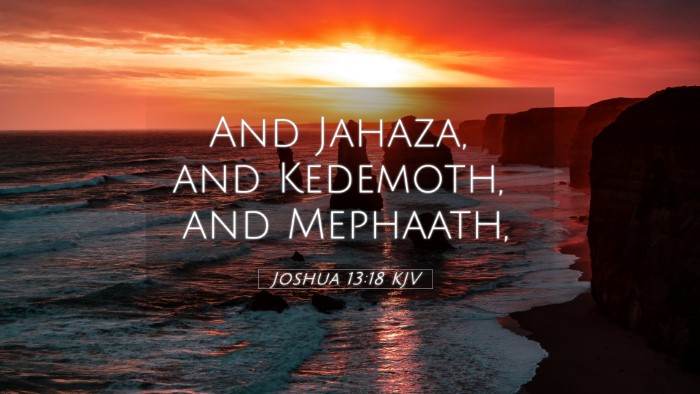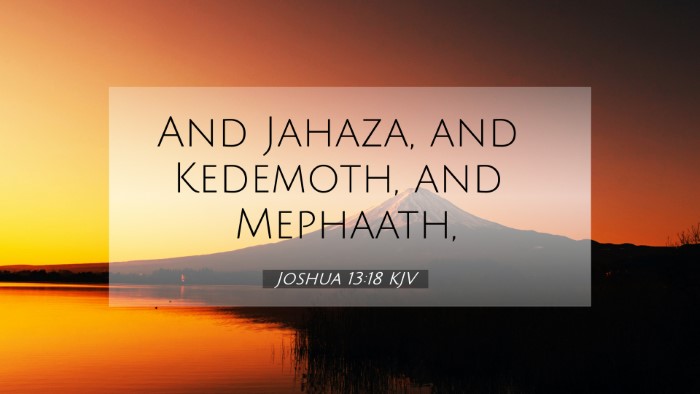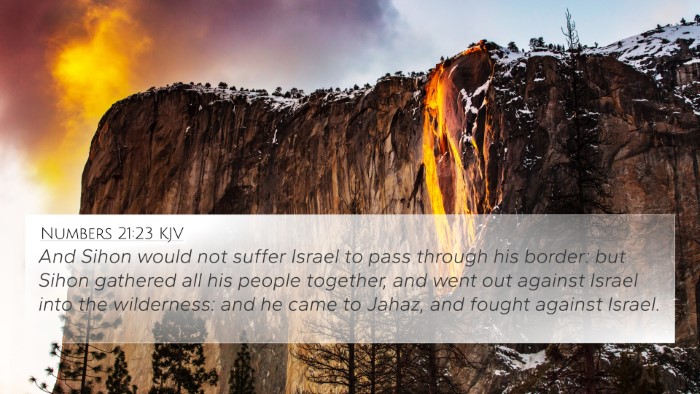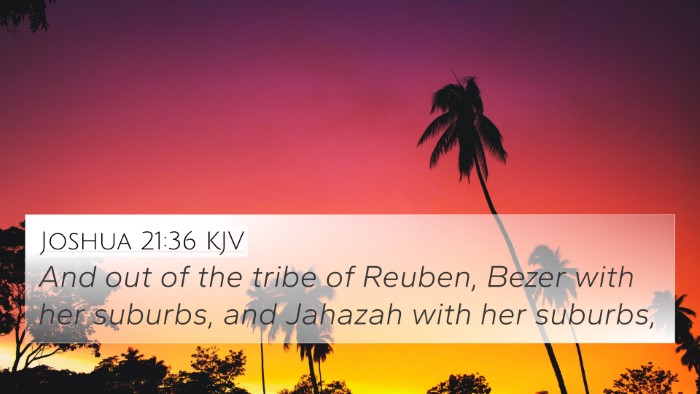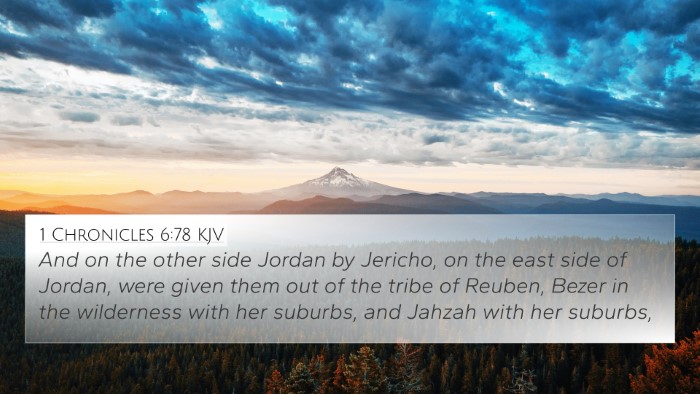Understanding Joshua 13:18
Joshua 13:18 states: "And Jahazah, and Kedemoth, and Mephaath," which lists three towns given to the tribe of Reuben. This verse is part of the larger narrative regarding the allocation of the Promised Land among the Israelite tribes.
Summary of Insights from Commentaries
The verse is significant primarily in how it underscores God's promise to the Israelites fulfilled through the meticulous division of land.
Matthew Henry's Commentary
Matthew Henry emphasizes that this distribution of land highlights God's faithfulness. The naming of specific cities reinforces the importance of each tribe's inheritance and their unique role within the nation of Israel. Henry notes that these cities served as places of refuge and worship, providing a glimpse into how God provided for His people.
Albert Barnes' Commentary
Albert Barnes adds detail regarding the geographic and historical context of the cities mentioned. He points out that Jahazah, Kedemoth, and Mephaath were strategically located. This geographical insight illustrates God's guidance in the placement of the tribes, ensuring their needs for defense, agriculture, and community were addressed. Barnes relates these places to the overarching themes of promise and providence in the Scriptures.
Adam Clarke's Commentary
Adam Clarke expands on the significance of the names of the cities, linking them to historical events and characteristics that shaped the local culture. Clarke often mentions how the Old Testament names often convey deeper meanings, hinting at the lives of the people who lived there. This shows an interconnection with other Biblical narratives, enriching the understanding of the text.
Cross-References
Joshua 13:18 can be understood better through several related scripture references. Here are some pertinent verses:
- Joshua 13:15-17 - Discusses the boundaries and cities given to the tribe of Reuben, putting Joshua 13:18 in context.
- Numbers 32:1-5 - The initial request by the tribe of Reuben and Gad for land on this side of the Jordan reflects their priorities and God's approval.
- Deuteronomy 3:12-17 - Offers insight into the land given to various tribes, particularly Reuben.
- 1 Chronicles 5:11-16 - Lists the descendants and tribal lineage, providing further context to the Reubenites.
- Numbers 35:6 - Describes cities of refuge related to the tribes and emphasizes the importance of a safe haven, which the named towns offer.
- Joshua 20:7-8 - Details the cities of refuge, linking the cities mentioned in Joshua 13:18 with the broader theme of sanctuary in the land.
- Isaiah 63:7-9 - Reminds us of God's deliverance and care for Israel, connecting the themes of inheritance and refuge.
Thematic Connections
The themes in Joshua 13:18 resonate with the broader biblical narrative of inheritance, promise, and community.
- God's Promises Fulfilled - The land distribution demonstrates God's covenant faithfulness, paralleling themes seen in Genesis 12:7 and Exodus 3:17.
- Communal Responsibility - The allocation of cities emphasizes the importance of each tribe maintaining their designated areas, reflecting on Philippians 2:4.
- Divine Guidance - Throughout the distribution of land, one can see God's providential hand, akin to the journey through the wilderness in Exodus 13:21.
Practical Application
When studying and understanding Joshua 13:18, it encourages believers to reflect on:
- God's Faithfulness - Trusting in God's promises as He provided for the Israelites, and continues to provide for us.
- The Importance of Place - Recognizing the significance of our spiritual and physical communities.
- Preparation and Obedience - Understanding that like the Israelites, we too are called to fulfill God's plans actively.
Conclusion
Joshua 13:18, while seemingly straightforward in its detailing of land distribution, encapsulates profound insights about God's faithfulness, the importance of place, and the active role of His people in fulfilling His promises. Through the cross-references and thematic connections, believers can gain a fuller understanding of not only this verse but how it fits within the larger narrative of Scripture.
